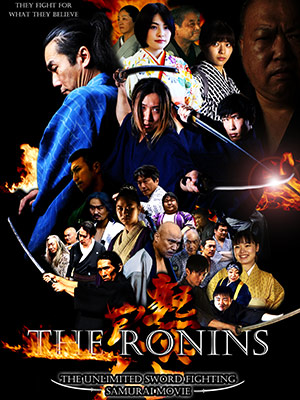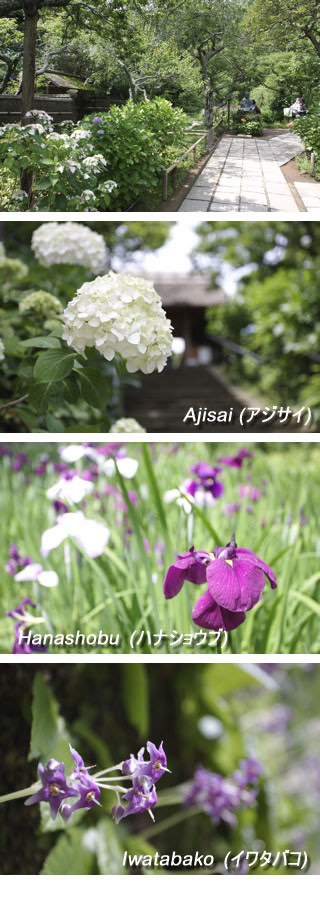In 1285, Shokozan Tokeiji Temple was founded in Kamakura by Kakusanshidoni, Hojo Tokimune's wife. This temple was a sanctuary for women seeking divorce and succeeded as a sanctuary for almost 600 years. In the beginning of the Meiji period, Tokeiji ended the role of a sanctuary and became a branch of Engakuji Temple of the Rinzai Zen sect with Shakusoen who rebuilt the temple. Today the balmy temple with a nunnery atmosphere and the flowers of season adoring its precincts are receiving visitors.
History
In the middle of the Kamakura period (1192-1333), under the reign of the Hojo and the Adachi after wiping out Miura Clan, a daughter named Horiuchi Dono was born in Adachi Clan. Her father was Adachi Yoshikage and her mother was a niece of Hojo Masako. When she was 10 years old, she got married to Hojo Tokimune, 11 then. Since Tokimune became a regent at the age 18, he put all his heart and soul into preventing the Mongolian invasion until his death at the age 34 in 1284. During that time, Tokimune and his wife deepened their faith in Zen under the influence of Tokimune's father Tokiyori. Furthermore, successive wars, natural disasters and corruption of in the religious world increased not only people who found salvation in Kamakura Buddhism but also Zen priests from China who were naturalized in Japan. Zen temples such as Kenchoji Temple, Engakuji Temple and Jochiji Temple were built in this period. Tokimune became a priest before nearing his end. His wife, too, became a nun and was named Kakusanshido from Mugakusogen.
Shokozan Tokeiji Temple was founded by Kakusanni in 1285. Its principal religious symbol is Shakanyorai. This temple was named Matsugaoka Palace on behalf of Yodoni V, daughter of Emperor Godaigo, after she entered the nunnery. Then this was known as a prestige nunnery.
Tokugawa Ieyasu took a great deal of trouble over the child of Toyotomi Clan he destroyed in Summer Battle in Osaka (1615). Ieyasu could not bear killing the child of the enemy he defeated because she was the adapted-daughter of his grand daughter Princess Sen. Eventually he wiped out the Toyotomi Family when he made her become a nun. Tenshuni XX, 7 years old then, was left in the temple. Asked by Ieyasu for her wishes, she applied for continuing the extraterritoriality and was accepted. That had a major effect on Tokeiji Temple to exercise the right throughout Edo period (1603-1868).
Some temples and shrines that had increased power since the end of Heian period, obtained extraterritorial rights and those who ran into there were exonerated from sins they committed. Meanwhile, Tokeiji eventually got to be known as a sanctuary for women seeking divorce rather than for the accused. It is recorded that the Tokugawa Shogunate granted a subsidy to the temple in the Edo period (1603-1868). While other temples were losing their privilege as a sanctuary, Tokeiji alone has succeeded it for nearly 600 years. One can tell how women of that period needed this institution. In March 1871, Tokeiji applied for continuing its law, however that was rejected by the Meiji government in July of the same year.
In May 1873, women finally became able to sue for divorce by themselves after Tokeiji's law was taken over to court by "Civil Rights". After the end of Tokeiji's role as a sanctuary, Furukawa Gyodo became the chief priest, the first male priest of the temple, in 1903.
Subsequently, Tokeiji was changed to a Zen training hall by Shakusoen. When he passed way at the age 61 in 1919, the title of "Tokeiji Chuko Kaizan" was conferred to him. Today, Masamichi Inoue has been the fifth chief priest since 1983.
Tokeiji has sculptures of Buddhas, Makies, pictures, handwritings and old writings, including heirlooms displayed in white-walled Matsugaoka-Hozo which lies just center of the precincts. These tell us the history of this temple. Moreover, they narrate women's sufferings and sadness in the feudal age as a witness.
url:http:// www.tokeiji.com/pc/en/index.html
phone: 0467.22.1663
No parking.
Entrance fee: 100 yen
The museum: 300 yen
Open: 8:30 am to 17:00 pm
(reference: Tokeiji official website)







